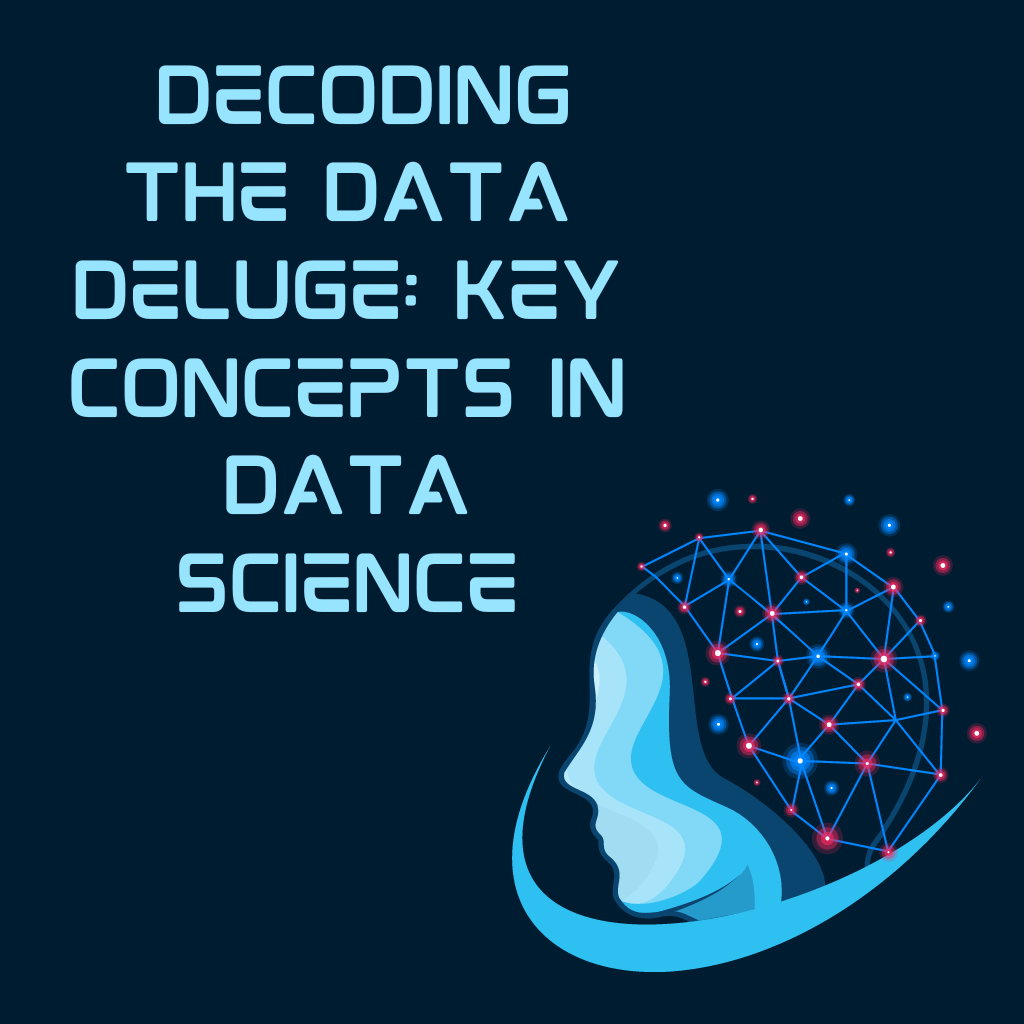Introduction:
In our rapidly evolving digital landscape, the sheer volume of data generated daily has given rise to what is commonly referred to as the “data deluge.” As organizations grapple with this abundance of information, the role of data science becomes increasingly pivotal. This article delves into the key concepts of data science, offering a comprehensive understanding of the field and its relevance in deciphering the complexities of the data deluge.
-
The Essence of Data Science:
At its core, data science is an interdisciplinary field that amalgamates statistical methods, machine learning algorithms, and domain expertise to extract meaningful insights from diverse datasets. It involves a systematic process encompassing data collection, preprocessing, exploratory data analysis (EDA), feature engineering, modeling, evaluation, and deployment.
-
Data Collection and Preprocessing:
The data science journey begins with data collection from an array of sources, including social media, sensors, customer interactions, and more. However, raw data is often riddled with inconsistencies and gaps. Data preprocessing is the crucial initial step where data is cleaned, transformed, and made suitable for analysis. It involves addressing missing values, handling outliers, and ensuring data quality, laying the foundation for subsequent stages.
-
Exploratory Data Analysis (EDA):
EDA is the phase where data scientists immerse themselves in the dataset, employing statistical and visual techniques to uncover patterns, trends, and potential outliers. Through tools such as data visualization and descriptive statistics, this stage provides a deeper understanding of the data, aiding in the formulation of hypotheses and guiding subsequent modeling decisions.
-
Feature Engineering:
Feature engineering involves selecting, transforming, or creating features (variables) to enhance the predictive power of machine learning models. This process requires a blend of domain knowledge and a profound understanding of the dataset. Techniques like one-hot encoding, scaling, and dimensionality reduction are employed to refine the features and prepare the data for modeling.
-
Modeling:
The heart of data science lies in modeling, where algorithms are trained on prepared datasets to make predictions or classifications. Supervised learning models, such as linear regression and decision trees, require labeled training data. Unsupervised learning models, including clustering algorithms, work with unlabeled data. The selection of a model depends on the problem at hand and the characteristics of the data.
-
Evaluation:
Evaluating model performance is critical to ensure the selected algorithm is effective in making accurate predictions. Metrics like accuracy, precision, recall, and F1 score provide insights into the model’s strengths and weaknesses. Employing cross-validation techniques helps assess the model’s generalizability to new, unseen data.
-
Deployment and Integration:
Successful models progress to deployment, integrating into real-world applications with considerations for scalability, performance, and ongoing monitoring. Effective deployment ensures that the insights derived from data science seamlessly integrate into business operations, influencing decision-making processes.
-
Ethical Considerations in Data Science:
As data science becomes ubiquitous, ethical considerations come to the forefront. Issues like algorithmic bias, privacy concerns, and responsible data use demand careful attention. Data scientists must navigate these ethical challenges, adopting practices that prioritize fairness, transparency, and accountability.
-
Machine Learning and Artificial Intelligence:
Machine learning, a subset of artificial intelligence (AI), is a driving force in data science. It involves developing algorithms that allow computers to learn from data and make predictions or decisions. Deep learning, a specialized branch of machine learning, has gained popularity for its ability to automatically learn intricate patterns from large datasets, particularly in tasks such as image recognition and natural language processing.
-
The Future of Data Science:
The field of data science is dynamic, with ongoing advancements in technology and methodologies. The integration of artificial intelligence, the rise of automated machine learning (AutoML), and an increasing emphasis on interpretability are shaping the future of data science. As organizations continue to grapple with massive datasets, the demand for skilled data scientists is expected to grow, driving further innovation in the field.
Conclusion:
In navigating the data deluge, a reputable Data Science Training Institute in Aligarh, Lucknow, Mathura, Nagpur, and other cities in India becomes the beacon, offering a systematic approach to extract meaningful insights from the vast sea of information. Understanding the key concepts, from data collection to ethical considerations, equips organizations to leverage their data effectively, making informed decisions and staying competitive. As technology continues to advance, the journey of data science promises to unravel new possibilities, ushering in an era where data is not just a deluge but a strategic asset for those who can harness its power.





